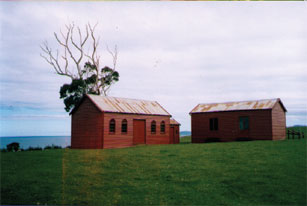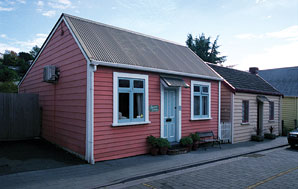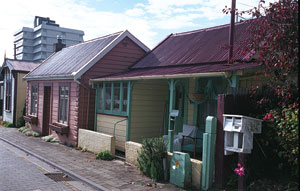Durability
By Graham Hepburn
You only need to look about you for evidence of New Zealand’s long and unbroken love affair with metal roofing.
Alongside weather board villas from the early 1900s with their corrugated iron roofs you’ll often see modern townhouses with standing seam roofs or brick homes topped with metal tiles. Corrugated iron has also become popular as a cladding with people who are after a certain look.
The reason for this is not only metal roofing’s versatility but also its durability.
That’s evident in some of this country’s oldest buildings such as some farm buildings in Matanaka in Otago which still have their “patent galvanized tinned iron” roofs that went on in 1843.
The Camphouse on the slopes of Mt Taranaki is another example. It was built in the 1850s and shifted to its present site at the end of the North Egmont Road in the 1890s. While the roof has blown off a couple of times, the original galvanized iron walls remain and are in excellent condition.
And since these buildings were erected, technological advances have improved the durability of metal roofing, especially in the last 30 years. This significant improvement in durability is what makes metal roofing a sustainable option – as it will not have to be replaced for generations.
One of the major breakthroughs was the advent of longrun roofing in the 1960s, meaning roofs could be made from cut-to-length sheets rather than having shorter length sheets lapped together, which invited corrosion problems and made them harder to maintain.
Advances in durability also came on several other fronts: most notably the move from zinc-coated (galvanized) steel to a combination of zinc and aluminium (Zincalume®) that gives the steel a greater lifespan than before.
Manufacturers also began making long-run roofing from high strength steel coil, which is about twice as tough as the softer steels that were previously used in roofing and cladding.
At about the same time as these developments, manufacturers were also investigating colour-coating steel coil which could then be turned into ready-painted steel rollformed into a range of shapes
Improvements in paint technology mean products such as ColorCote®, made by Pacific Coilcoaters, COLORSTEEL®, made by New Zealand Steel, and Gerard Roofs made by AHI Roofing, provide robust cladding and roofing that will cope with the harshest environments.
Just as the bodies and chassis of cars have benefited from improvements in paint technology and the substrate itself, so have roof metal roofs. Cars were once prone to rusting out before their time but now the bodies of modern cars outlast the other parts. So it is with metal roofs: while they might have a nominal 15-year guarantee, for example, they are manufactured to such a standard that they should easily exceed those expectations.
The improved lifespan of metal roofing and cladding has also been helped by a better understanding of design and knowledge of the materials themselves. It’s important to distinguish between the right style of product for a roof and what will work best as cladding – they are often two different things.
Because metal roofing and cladding benefits from regular washing by rain, it’s always best to resist using metal wall cladding – unless it’s aluminium - where it won’t get rinsed down from time to time. While it’s fashionable to run the lines of corrugated iron horizontally when used as cladding, orienting them vertically – although maybe not so aesthetically pleasing - natural rain washing which helps the material last longer.
There’s also a need to make sure you’re using the right product for the environment – especially in tough conditions such as coastal situations or ones where there’s geothermal activity. Being aware of any extreme conditions and choosing the correct product to withstand them is essential to the longevity of the roof.
Getting the best out of your metal roof also depends on using it in combination with the right materials and fixings according to the correct specifications and industry practice.
Durability is also enhanced by regular maintenance such as washing and keeping paintwork in good condition – the same sort of thing people wouldn’t give a second thought to when looking after their cars.
With technology, design and good maintenance there’s no reason the metal roofs and claddings of today couldn’t be around for generations to come.




